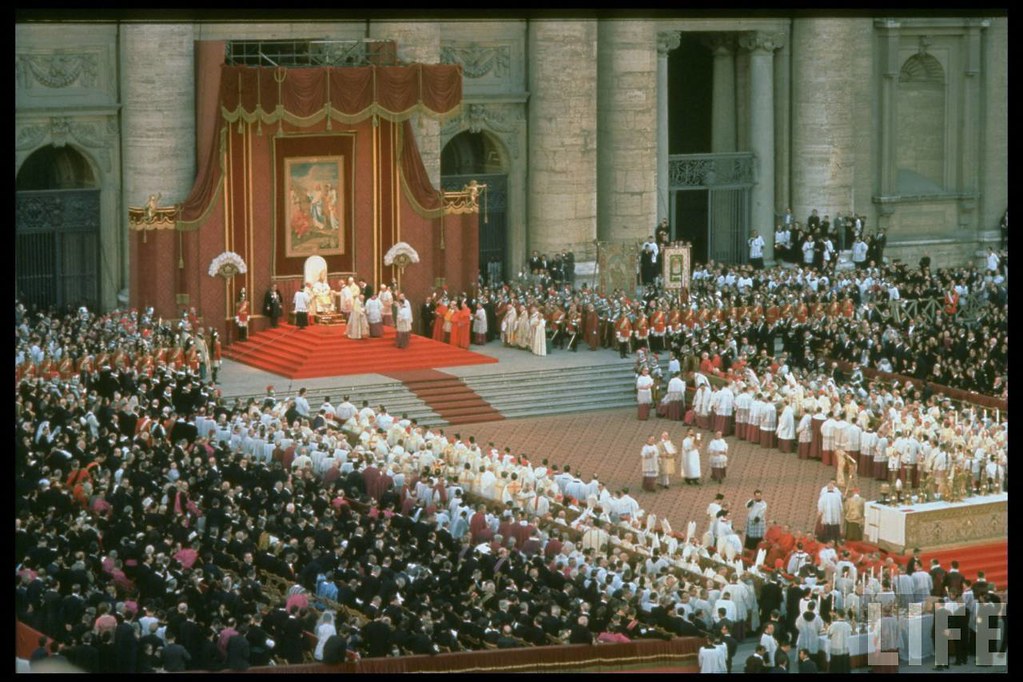a rather lengthly, yet unconvincing, explanation of the Roman Catholic church vestments:
Library : Why Liturgical Vestments? | Catholic Culture
"The principal purpose of liturgy is the glorification of God. The liturgical vestments must also contribute to the glory of God. Our internal acts must find expression in our outward appearance, for man is not only spirit, but also flesh. Acts of adoration and reverence, which proceed directly from the soul, are expressed by acts of the body, such as genuflecting and inclinations. Likewise, the garments worn by clerics in presenting themselves before God to give Him public honor are an outward expression of their feeling of reverence in the presence of God. In this respect they are no less a means of glorifying God than the bending of the knee and similar acts of respect."
If the purpose of vestments is to promote a "feeling of reverence in the presence of God", then it's not working. At Catholic masses today there are people of all ages engaged in conversations, dressed casually (shorts, flipflops, tshirts with all sorts of messages, etc.), coming in late, casually receiving communion, leaving early, behavior more befitting a shopping mall or playground than a place of worship, etc. (not to mention unruly school age children and the "marketplace" that exists inside and just outside many RC churches today)
"In answer to the first question, we may say that there was no conscious purpose in the mind of the Church in adopting a distinctive garb for the clergy while celebrating sacred functions. As far as we know, our divine Lord gave no directions to the apostles or to the Church in regard to this matter. If He had done so, we would expect the apostles to have carried them out in the assemblies of the Christians. The fact is that several centuries elapsed before the clergy at divine services were vested in garments different in style from those of the laity. Abundant testimony from the early centuries sufficiently substantiates the fact. Furthermore, the Roman Church even appears to have been opposed to the adoption of a distinctive liturgical garb. We know this from a letter of Pope Celestine I (422-432), in which he reproved the bishops of Provence for using a special costume at liturgical services."
There seems to be more "Roman" than "catholic" in the Roman Catholic church today--vestments, Roman architecture, expensive art and other "decorations", an old, exclusively male, hierarchy that dresses and functions like ancient Rome, unholy atmosphere during mass, etc.
Perhaps it's time to take another look at all of the "Roman" in Roman Catholic.

No comments:
Post a Comment